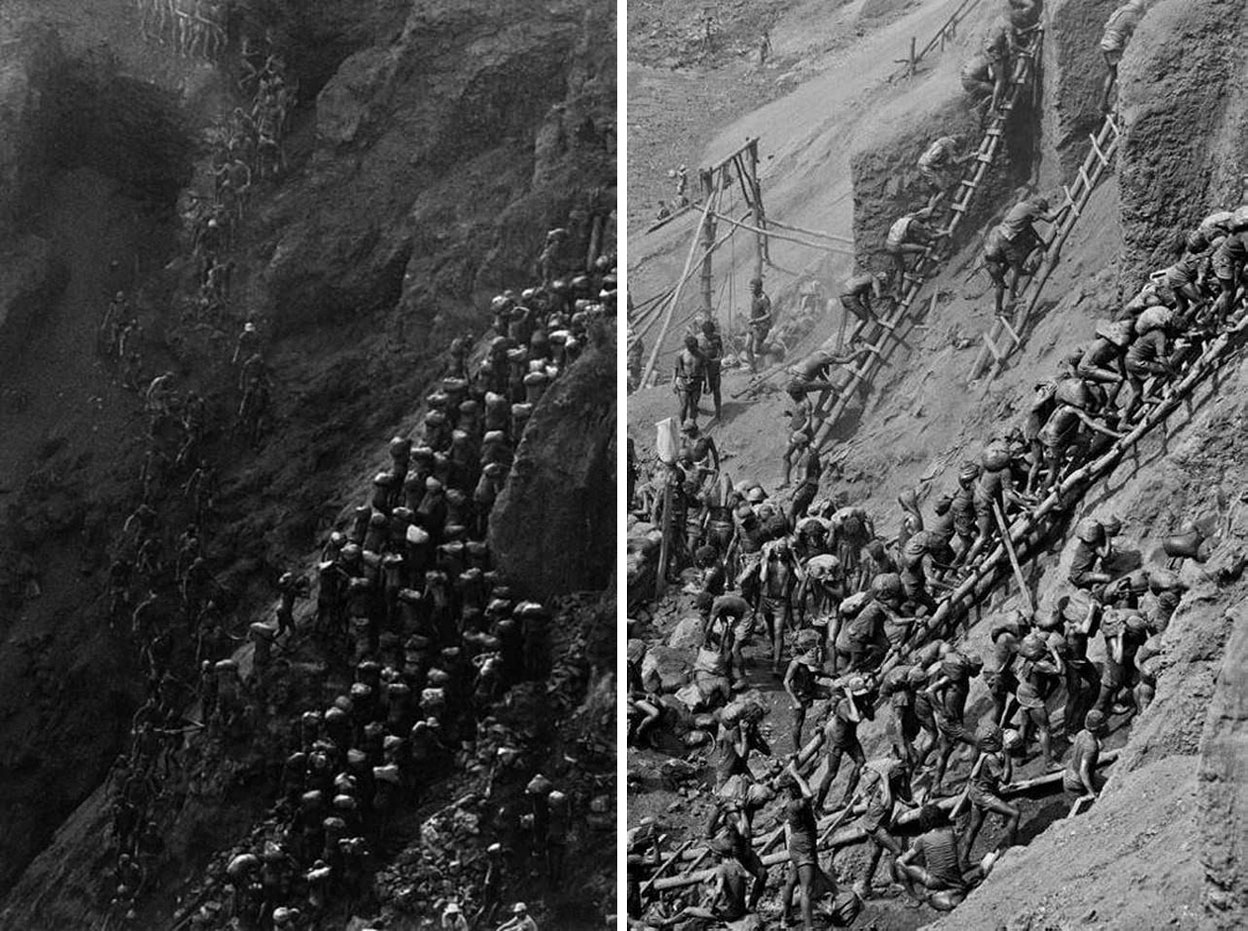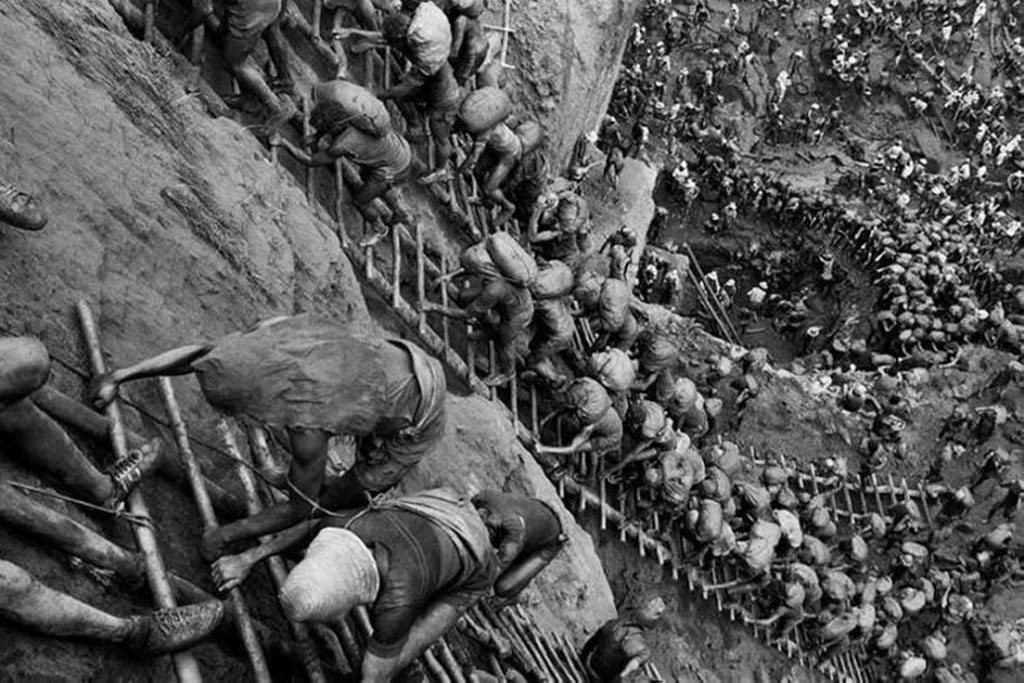PHOTO:Sebastião Salgado-Serra Pelada Gold Mine
Sebastião Salgado is one of the most widely-respected of contemporary documentary photographer. His in-depth bodies of work document the lives of people the world over, finding beauty, strength and hope even in those in the bleakest of circumstances. Salgado travels the world documenting the poor and powerless, as well as the grandeur of nature, in analogue black-and-white photographs that are both highly formal and unflinchingly documentary.
By Dimitris Lempesis
Photo: SESC Archive
The exhibition “Gold-Serra Pelada Gold Mine” features a photographic series that arose based on Sebastião Salgado’s trip to the district of Serra Pelada, where over the course of one month in 1986 he witnessed firsthand the daily life of the gold diggings and the entire social landscape that was formed around the precious metal’s extraction. In 1979 a local child swimming on the banks of a local river found a 6 grams nugget of gold. Soon word leaked out and by the end of the week a gold rush had started. During the early 1980s, tens of thousands of prospectors flocked to the Serra Pelada site, which at its peak was said to be not only the largest open-air gold mine in the world, but also the most violent. At first the only way to get to the remote site was by plane or foot. Miners would often pay exorbitant prices to have taxis drive them from the nearest town to the end of a dirt track; from there, they would walk the remaining distance, some 15 kilometers to the site. Huge nuggets were quickly discovered, the biggest weighing nearly 6.8 kgr. During the peak of the gold rush the mine was known for appalling conditions and violence, whilst the town that grew up beside it was notorious for both murder and prostitution. Three months after the gold’s discovery, the Brazilian military took over operations to prevent exploitation of the workers and conflict between miners and owners. Before the military takeover basic goods were sold for hugely inflated prices by the mine owners. The government agreed to buy all the gold the garimpeiros (diggers) found for 75 percent of the London Metal Exchange price. Officially just under 45 tons of gold was identified, but it is estimated that as much as 90 percent of all the gold found at Serra Pelada was smuggled away. While the military government banned women and alcohol at the actual mine, the nearby town became a town of “stores and whores”. Thousands of underage girls prostituted themselves for gold flakes while around 60–80 unsolved murders occurred in the town every month. As Sebastião Salgado said in 1992 “Swept along by the winds that carry the hint of fortune, men come to the gold mine of Serra Pelada. No one is taken there by force, yet once they arrive, all become slaves of the dream of gold and the need to stay alive. Once inside, it becomes impossible to leave… Anyone arriving there for the first time confirms an extraordinary and tormented view of the human animal : 50,000 men sculpted by mud and dreams. All that can be heard are murmurs and silent shouts, the scrape of shovels driven by human hands, not a hint of a machine. It is the sound of gold echoing through the soul of its pursuers”. Sebastião Salgado’s photographs have also contributed to documenting and raising awareness about the conditions of wildcat mining in Brazil and around the world. His photos captured the scenario of the multitudes that coalesced in the name of gold, shedding light on the clashing of forces that arose among the human bodies present there, and their social context. The massive presence of bodies in long lines, plastered with mud and milling around the holes dug into the soil suggests the sheer size, hardship and precariousness of the manual work. That human mass seemed to have lost its subjectivity, working in an autonomous, nearly mechanical way. Perhaps this is why the scenes recorded by Sebastião Salgado, uniformized in black-and-white, lend the wildcat mine workers a sculptural aesthetics. By imbuing the human bodies with shine, volume and rigidity, the photographer lent them a monumental and objectual aspect. Sebastião Salgado’s photographic production has sparked the debate about the relations between art and politics and kindled discussion concerning modes of representation in the social sphere. Throughout his career, the photographer has used the experience of the image to decrease the distance between the various publics of the narratives surrounding territories in a state of tension. By immersing himself in specific communities and localities, he thus amplifies the digressions on alterity and leverages contacts between different modes of sociability.
Info: Curator: Lélia Wanick Salgado, SESC Avenida Paulista, Avenida Paulista 119, São Paulo, Duration: 17/7-3/11/19, Days & Hours: Tue-Sat 10:00-21:30, Sun 10:00-18:30, www.sescsp.org.br














